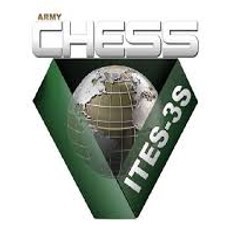Cost optimization and cost cutting are not the same thing. The distinction is crucial to creating (vs. diminishing) customer and business value.
I speak with many C-level and senior leadership team members regarding business strategy and many divisional/business unit leadership and management regarding strategy execution.
The concept of “cost cutting” is increasingly a part of these discussions. However, the term “cost cutting” is often misunderstood and often has different meanings across an organization - leading to sub-optimal execution of cost cutting strategies and tactics
3 Key Concepts and Distinctions
- Effectiveness vs. Efficiency
I refer to Effectiveness as the big “E” and efficiency as the little “e.”
Effectiveness (the big “e”) is about creating customer and business value via providing customers (internal and external) with products (goods and/or services) at specified levels of utility and warranty (e.g., quality, timeliness, customer service, fit-for use, etc.).
Efficiency (the little “e”) is about providing effectiveness in the most economical manner. In other words, providing effectiveness, without compromising specified levels of utility and warranty, at the lowest cost.
I refer to effectiveness as the big “E” because efficiency (the little “e”) cannot be optimized until effectiveness is defined and specified.
Also, see my blog post The Five Essential Business Analysis Questions for BPR.
- Efficiency vs. Cost Cutting: Strategic vs. Tactical Cost Reduction
Efficiency (the little “e”) as described above is about creating effectiveness (the big “E”) in the most economical manner. Strategic and tactical cost reduction/cost cutting (described below) are important components of efficiency.
Strategic cost reduction is the conscious choice to reduce the specified levels of utility and/or warranty (e.g., quality, timeliness, customer service, fit-for use, etc.) if those specified levels of utility and/or warranty exceed what customers (internal or external) value and are willing to pay.
However, it’s also a valid argument in many cases to increase the specified levels of utility and/or warranty if the specified levels of utility and/or warranty are below your customer’s needs and expectations – and your customers are willing to pay more for increased levels of utility and/or warranty.
Strategic cost reduction, as described above, is lowering the levels of effectiveness to the appropriate/optimal levels to reduce cost. However, once we calibrate the specified levels of effectiveness, we can then look at tactical cost reduction.
Tactical cost reduction is about maintaining the appropriate/optimal services levels while cutting out non-value adding costs. Non-value adding costs are costs (e.g., waste, rework redundancy, excess internal movement, etc.) that we can cut/reduce that do negatively impact the specified service levels. See my blog Lean: Getting Early Wins from BPM.
Strategic and tactical cost reduction are both viable, but different strategies regarding cost optimization.
However, there is also indiscriminate cost cutting - cutting costs without analyzing the impact on effectiveness and/or efficiency and not looking at the impact of the cuts in cost upstream and downstream in the process across functional silos. Indiscriminate cost cutting often results in sub-optimization of the value of goods and/or services from a customer perspective.
- Cost Cutting vs. Cost Optimization
Cost optimization, as defined by the Gartner Group “is a business-focused, continuous discipline to drive spending and cost reduction, while maximizing business value.”
Cost optimization has two components. First, its essential to “get” effectiveness “right.” Meaning, ensuring that the specified levels of effectiveness are appropriate for customer needs and expectations. Second, once the specified levels of effectiveness are properly set/calibrated, it’s important to identify and apply strategic and tactical cost cutting strategies per the discussion above
The key takeaway from this post is for organizations to have a clear understanding of distinctions among effectiveness (the big “E”), efficiency (the little “e”), strategic vs. tactical cost reduction, indiscriminate cost cutting, and cost optimization - and then apply the appropriate cost optimization strategies - but not indiscriminate cost reduction!
Also see my blog post Cost Optimization: Three Essential Strategies and white-paper Cost Optimization Initiatives: 10 Best Practices.
Subscribe to my blog | Visit our Knowledge Hub
Visit my YouTube channel | Connect with me on LinkedIn
Check out our Business Analysis Training Courses and Consulting Services




















